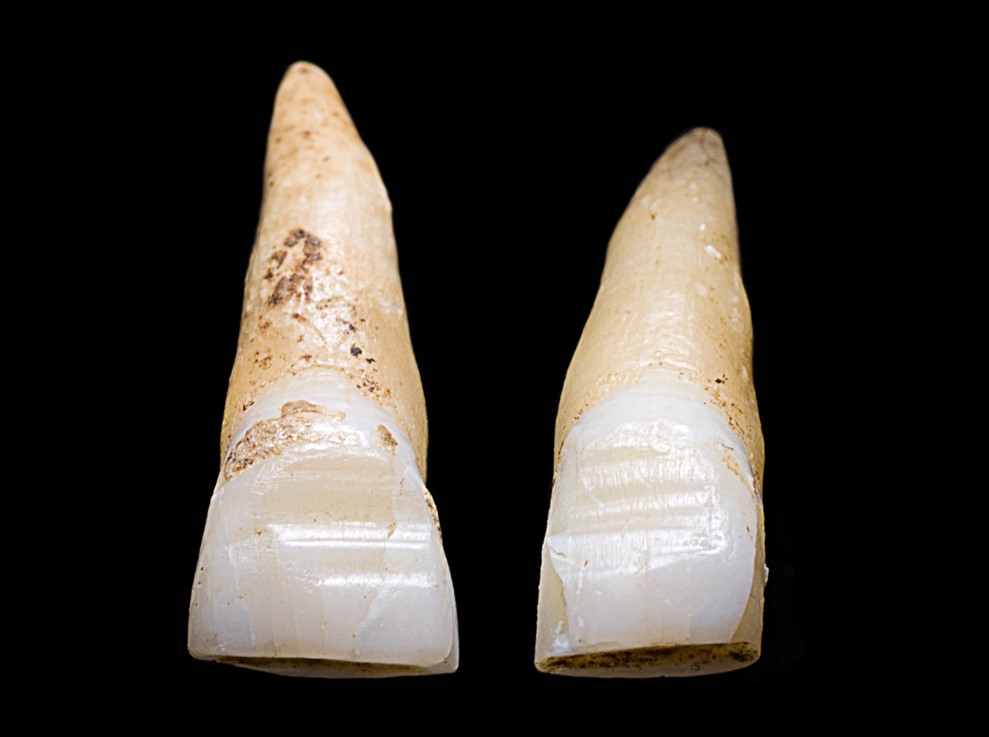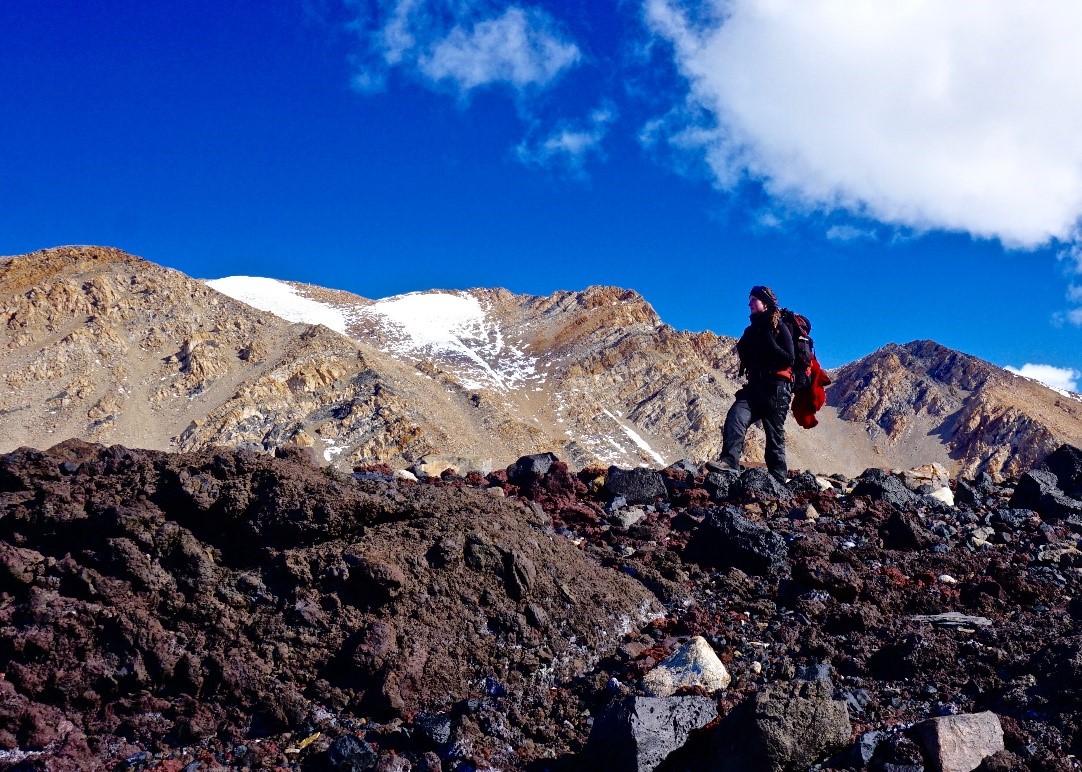By Stephanie Fox
Medill Reports
What do Antarctic climate scientists and Nordic Vikings have in common?
More than you might think.
After being cast out of Iceland for murdering his neighbor, Erik the Red, the notorious Viking who walked the Earth around 985 A.D., braved the unforgiving seas in search of a new home. That’s according to Christopher Klein’s History article “The Viking Explorer Who Beat Columbus to America.” Wrapped in layers of pelts, tools in hand, the Viking dropped anchor on new land. Gradually, he took control, founding the first European settlement in what is today Greenland.
In 2011, discovery of a Nordic Viking burial revealed a pit filled with 51 skulls and 54 bodies. Many of the skulls contained teeth indented along the front with tiny divots. Scientists speculate that Vikings filed their incisor teeth either to demonstrate their status as a warrior or simply for decoration, said the Head of Oxford Archaeology Burial Services, Louise Loe. Regardless of the reason, the process involved is believed to have been excruciating.

“The grooves are quite deep, so there is the danger of reaching the pulp and exposing the nerves,” explained Loe in an email interview.
Climate scientists hazarding ice-capped lands aren’t murdering their colleagues or conquering villages, of course. But they do share some similarities with ancient Vikings. They face freezing temperatures, trek through untouched terrains and sometimes undergo a painful dental procedure–they may have to remove their wisdom teeth to become modern-day explorers.
“They haven’t taken mine, but it’s a current debate with my dentist,” said University of Maine undergraduate senior Laura Mattas between bites of a grilled cheese at the 12th annual Comer Abrupt Climate Change Conference last fall. The first time she traveled to Antarctica as a university sophomore in 2016 to study the expansion of alpine glacier ice sheets, she passed the screening that waived her from needing to extract her wisdom teeth.
“I am hoping that my dentist will look at my scans, realize that I can keep my wisdom teeth… and [I’ll be] allowed to go to the continent, teeth intact,” she said.
But a month later in preparation for her December trip to Antarctica, Mattas received notice that to continue exploring—and, perhaps, embrace her inner Viking—she needed to remove her wisdom teeth.
Though wisdom teeth removal is not always required, Mattas knows she isn’t the first scientist to undergo this procedure.
“I have been to Antarctica and they took [my wisdom teeth] out before I went,” said Penn State geologist Richard Alley whose wisdom teeth were removed in 1984. That year, Alley traveled there to study how snow turns to ice on polar glaciers at temperatures well below melting. This research developed his interest in ice cores and his current examination of climate histories in Greenland, that are helping us predict the pace of climate change today.
“They [the National Science Foundation (NSF)] are worried that you might have an infection from an impacted wisdom tooth while you’re in Antarctica” where treatment options are limited, Alley said. “They are very, very gung-ho about getting wisdom teeth out.”
They may have been “gung-ho” about removing Alley’s wisdom teeth in 1984, but the method of determining who is qualified to travel to Antarctica has changed since then. Still, scientists must be screened before gaining approval. The basic examination goes back to the 1950s.
A remnant of the U.S. Navy, the Antarctica health exam’s original creator, is hidden in the phrase scientists use to celebrate passing the physical exam assigned by the United States Antarctica Program (USAP). After undergoing three-to-four doctor’s appointments—which can include physical exams, x-rays, blood test and more—results are sent to the University of Texas Medical Branch at Galveston to be reviewed. The paperwork then travels back to USAP and the program notifies applicants as to whether scientists have been “PQ’d”—the term meaning “physically qualified” that was used by the first United States Antarctic explorers, the Navy Seabees.
Navy Seabees began construction of buildings, airfields and harbors on Antarctica in 1956. As development on Antarctica grew, the Navy initiated Operation Deep Freeze, a program started in 1975 to expand the United States’ scientific knowledge of Antarctica. During this time, only those in the best health gained permission to travel to the continent.
“In [1956] you couldn’t get there in the winter” to rescue anyone. “So, they [Navy physicians] were looking for incredibly healthy people that they thought would be low risk,” said James McKeith, the Medical Director for the NSF-managed United States Antarctic Program.
In the spring of 1998, the Navy relinquished control of the logistical support for scientists in Antarctica to save money after the Cold War. That’s when the program passed from the Navy to the National Science Foundation.
As the years pass, this criterion continues to change. While the Navy maintained control, the process of being PQ’d followed a standard approach for every applicant. Now, scientists traveling during Antarctica’s austral summer (between October and February) are analyzed based on their personal health. For example, a 25-year-old applicant in good health won’t be screened for heart attacks, but older applicants might.
“We try to make our tests as non-invasive as possible,” continued McKeith. “We try to minimize things like C.A.T. scans and stuff like that that may expose the patient to radiation, unless their condition can only be evaluated that way.”
Not only are the exams more personalized, but they are also more inclusive than they used to be. Rather than immediately denying those with medical ailments, the NSF uses USAP’s analysis to determine the risk of sending a scientist with a preexisting condition to Antarctica. If the condition can be managed, the scientist will be PQ’d.
“We have people with HIV, we have diabetics, we have people with cancer. We just need to know that it’s relatively well controlled,” said McKeith. In this case, “well controlled” means that the ailment will most likely not become life-threatening while the scientist is in Antarctica.
The scientist’s chance of being PQ’d increases for fieldwork during the austral summer when there are flights in and out of Antarctica every other day. These flights and their ability to fly a person to medical care in an emergency are factored into the NSF’s decision to PQ applicants. As technology advances and landing planes in Antarctica becomes easier, more scientists are PQ’d.
Though the process has become more personalized, one condition requires screening for everyone: abnormal wisdom teeth.
“Believe it or not, dental is one of our highest complications down there… Teeth break. You get cavities. But we require wisdom teeth to be removed, only when they are abnormal,” McKeith explained. Dental infections can become dangerous quickly—so quickly that those who develop a wisdom tooth infection while in Antarctica may not be able to reach proper medical care before serious damage occurs. Because of this, extraction of unerupted or impacted wisdom teeth is often required of scientists traveling to the continent.
Scientists “wintering over,” or staying in Antarctica during the winter months, are still screened thoroughly because the extreme conditions including the darkness and low temperatures often make it too dangerous for rescue aircraft to fly into Antarctica in the case of an emergency.
Past scientists had to learn this the hard way.
While wintering over in 1999, physician Jerri Nielsen FitzGerald discovered a lump on her breast. Completely remote and miles away from medical aid, FitzGerald diagnosed herself with breast cancer. For months, planes were unable to land and rescue the physician from Antarctica. Instead, they flew over NSF’s Amundsen-Scott South Pole Station, dropping chemotherapy down for her to administer herself.
Another doctor was forced to remove his own appendix while wintering over. In 1961, 27-year-old Russian surgeon Leonid Rogozov started feeling fatigued with pain in his side. It wasn’t long before he came to a diagnosis–he had developed appendicitis. Using local anesthesia and assistance from two expeditioners he performed the surgery on himself. Because of Rogozov, the Australian Antarctic Division (AAD) now requires all scientists who winter over to have their appendix removed in advance, according to the AAD’s Media Advisor Mark Horstman.
FitzGerald and Rogozov both survived, but their situations are what USAP hopes to avoid.

Though flying into Antarctica during the winter is now possible, it’s still exceptionally dangerous and tremendously expensive.
“If we decide we can get in, and the temperature is not below the literal physical limitation of the aircraft… [then] we have to send two aircraft in because one is the search and rescue aircraft for the other. We risk two aircraft, and there’s four people in each because we’ve got the pilot, copilot, engineer and mountaineer. So, we’re risking two aircraft, eight lives, and probably in the millions of dollars to get someone out of there,” McKeith said. “Our job is to make sure that within what’s humanly possible, we don’t risk lives and we don’t waste money.”
The physical exams scientists undergo minimize the chance of scenarios such as FitzGerlad’s and Rogozov’s. Both doctors were isolated in Antarctica due to wintering over, and they did not have access to the same medical supplies available today.
Still, accidents happen.
The most common health risks scientists currently face are environmental ones. With 100 mile per hour winds, frostbite-inducing temperatures and steep landscapes, minor accidents are the primary cause of injury.
“Most of the injuries that occur to folks in Antarctica are slips, trips and falls,” explained Peter West, the Polar Outreach Program Manager at the NSF. The NSF manages the U.S. Antarctic Program, which funds the majority of United States’ research projects conducted in Antarctica. The USAP has both screening and training programs in place to ensure that scientists doing fieldwork are equipped for their trips. “What we want you to do is be as safe as possible and make sure that people are healthy and prepared medically and mentally to stay in an environment like [Antarctica],” West said.
With so many other dangers present in Antarctica, the occasional removal of wisdom teeth is just one more precautionary measure taken to ensure a healthy stay.
Still, scientists are always happy to learn that they get to keep their wisdom teeth. But they—like Mattas—know there is always a possibility that could change.

